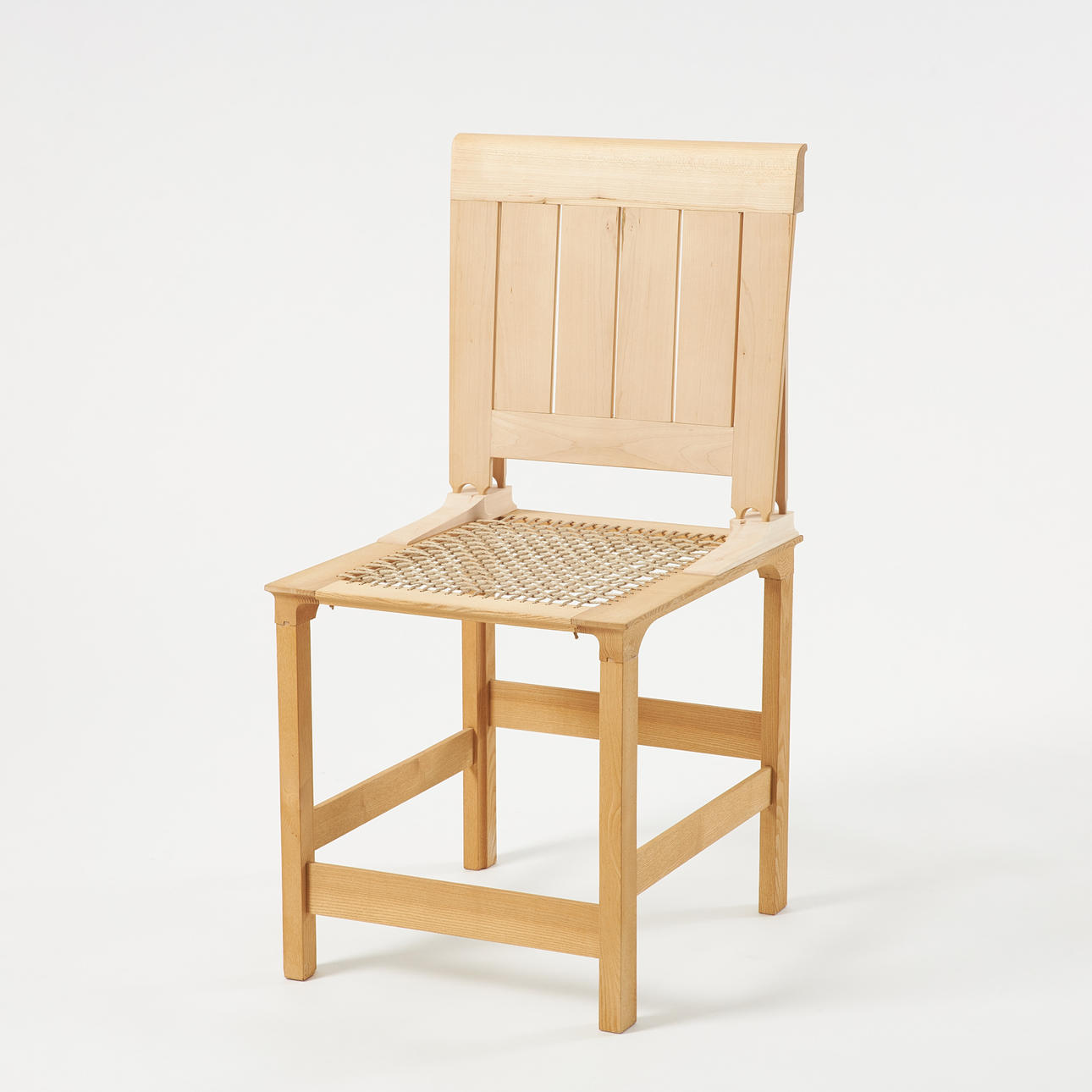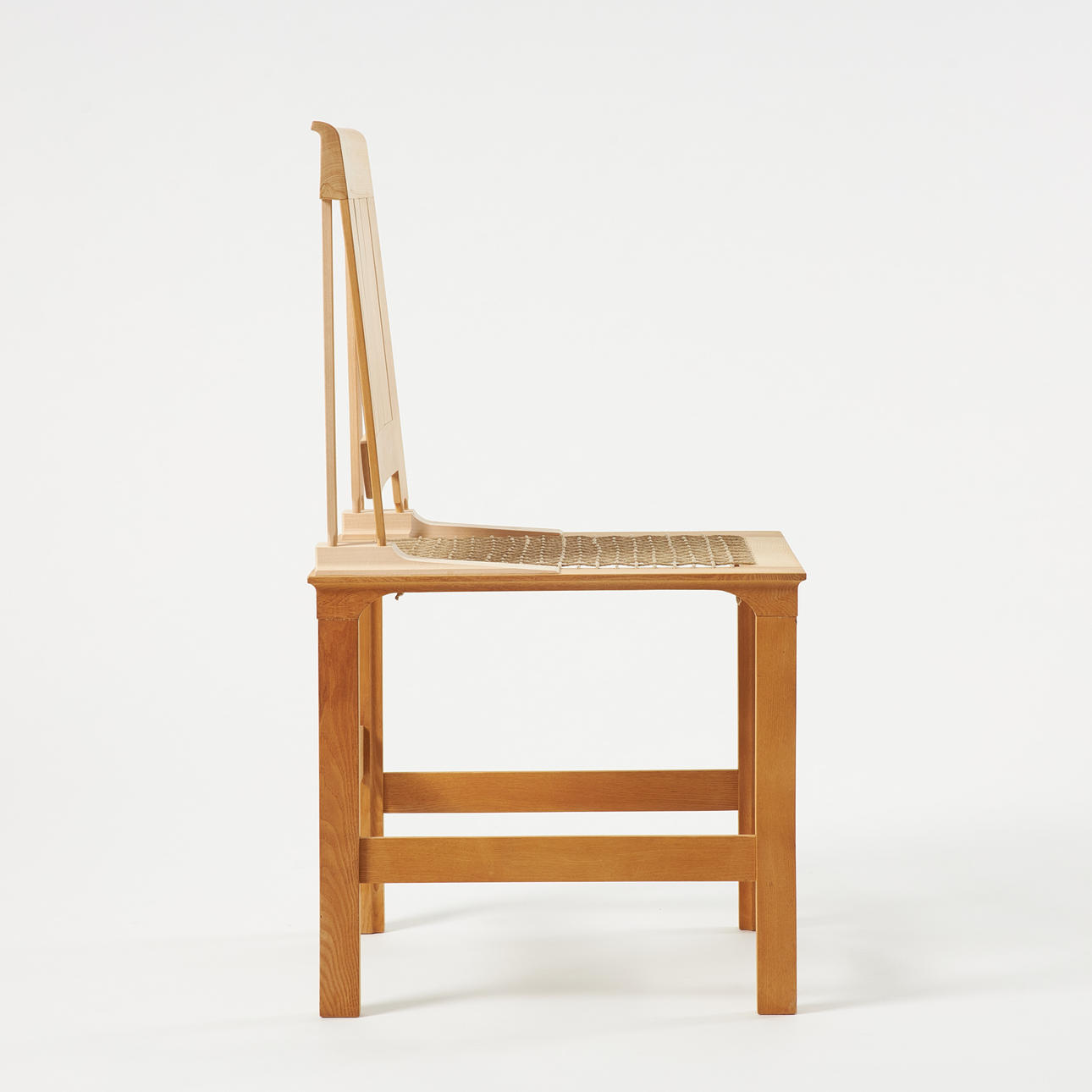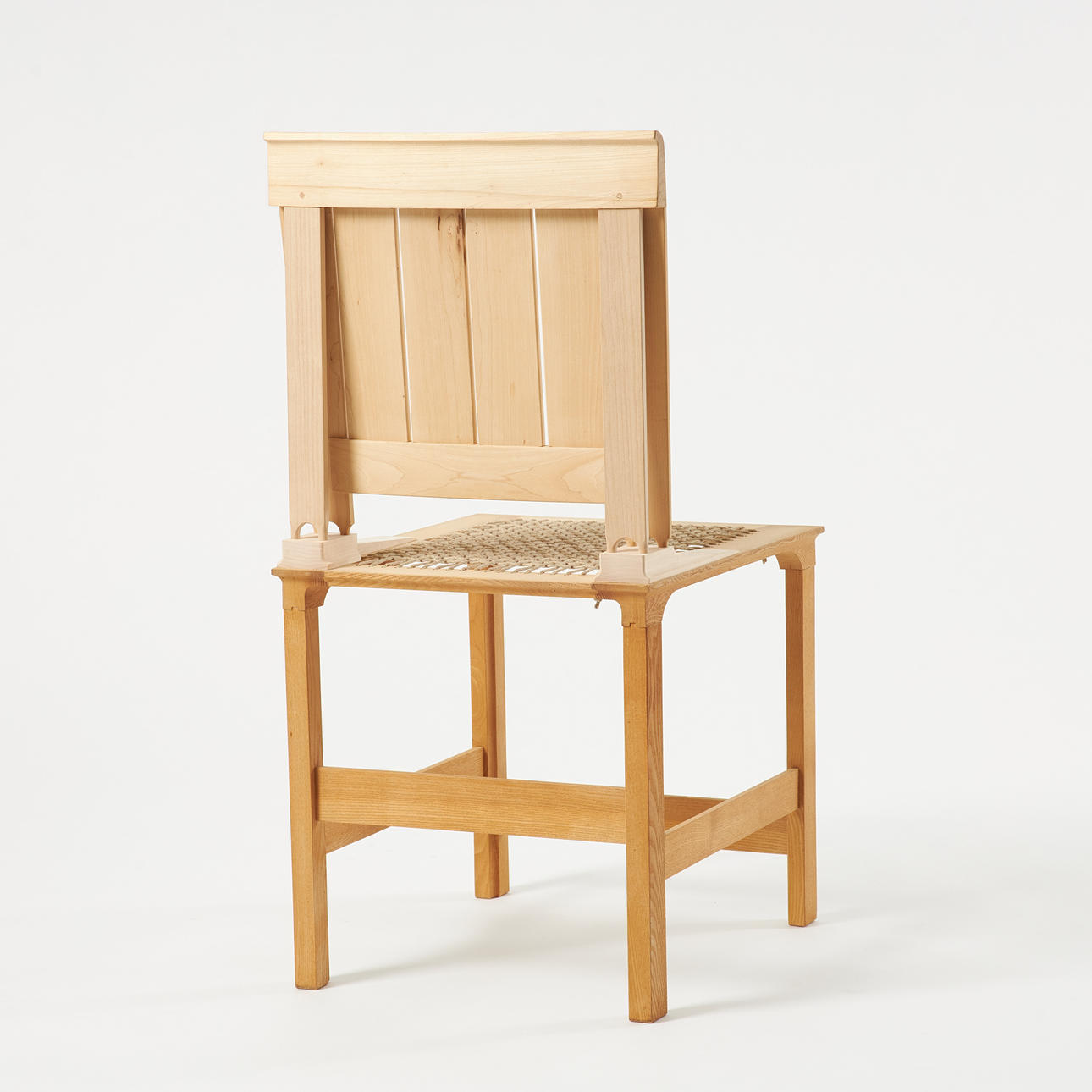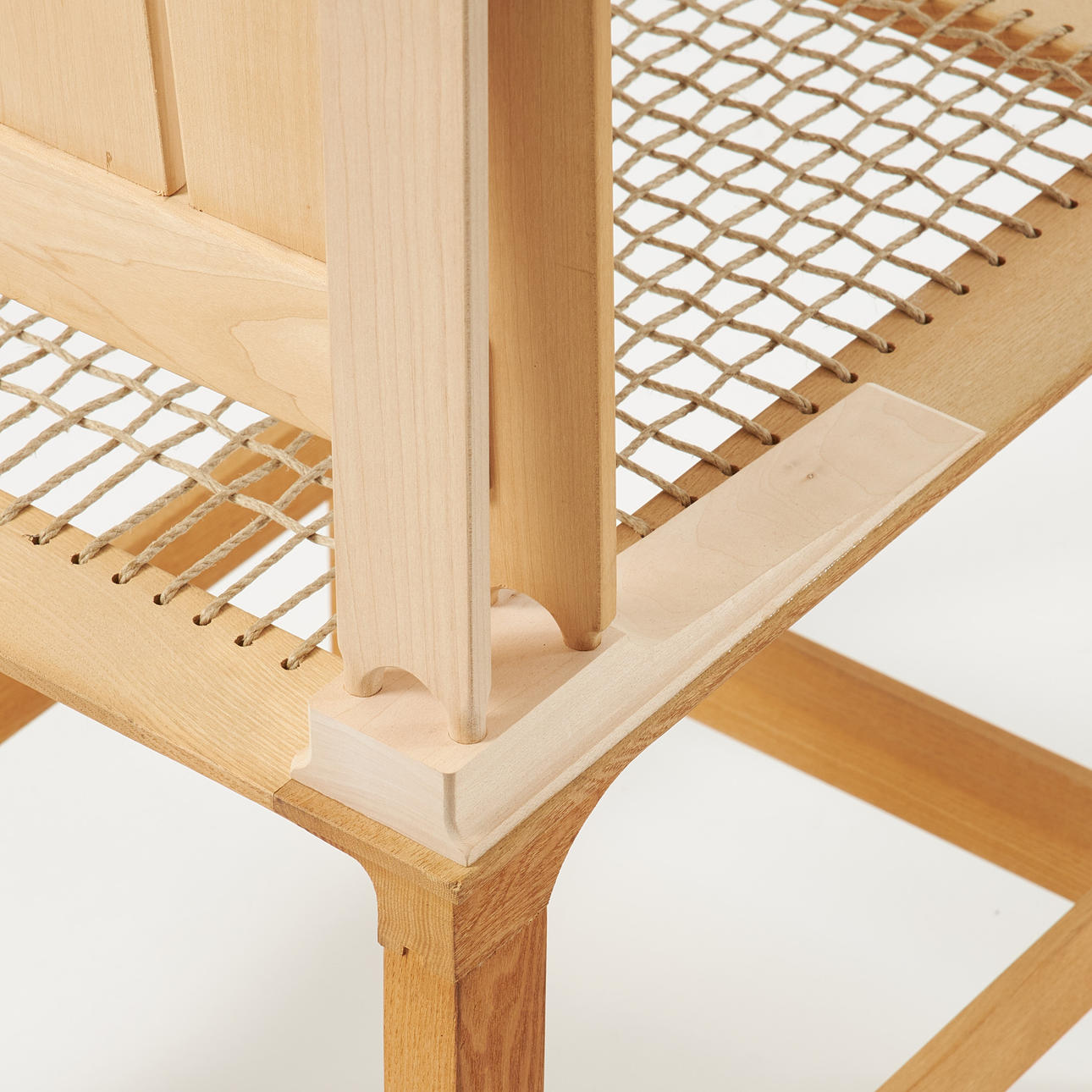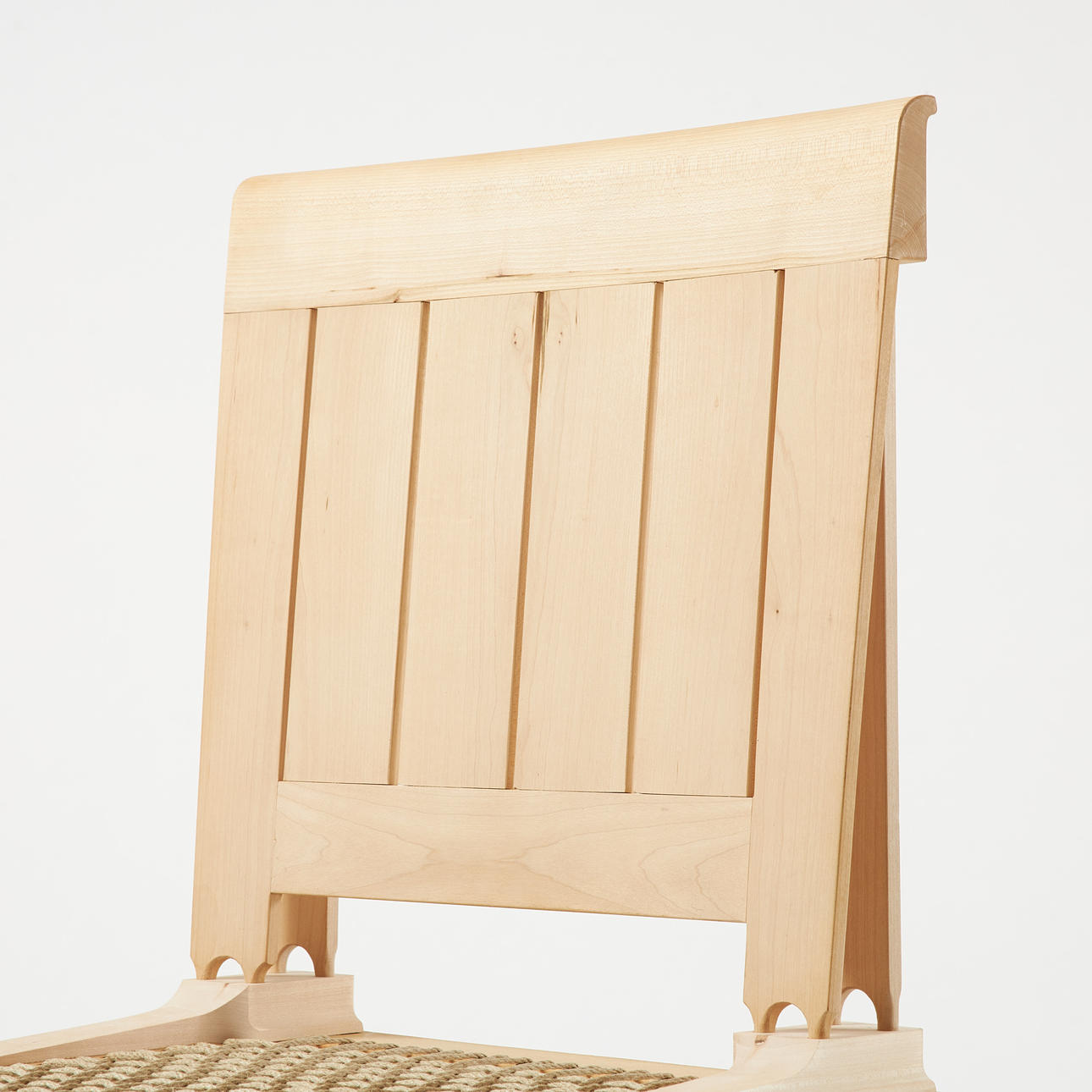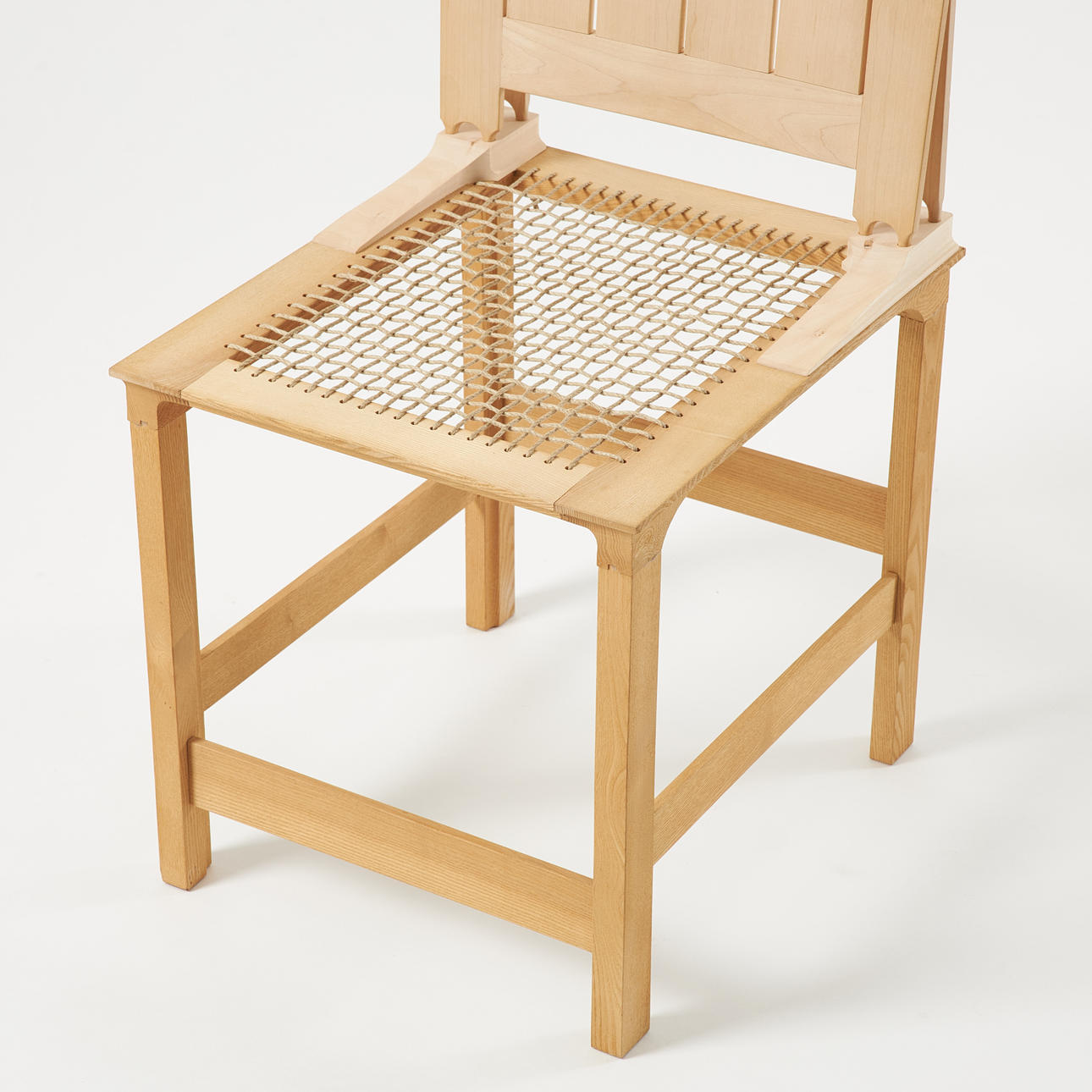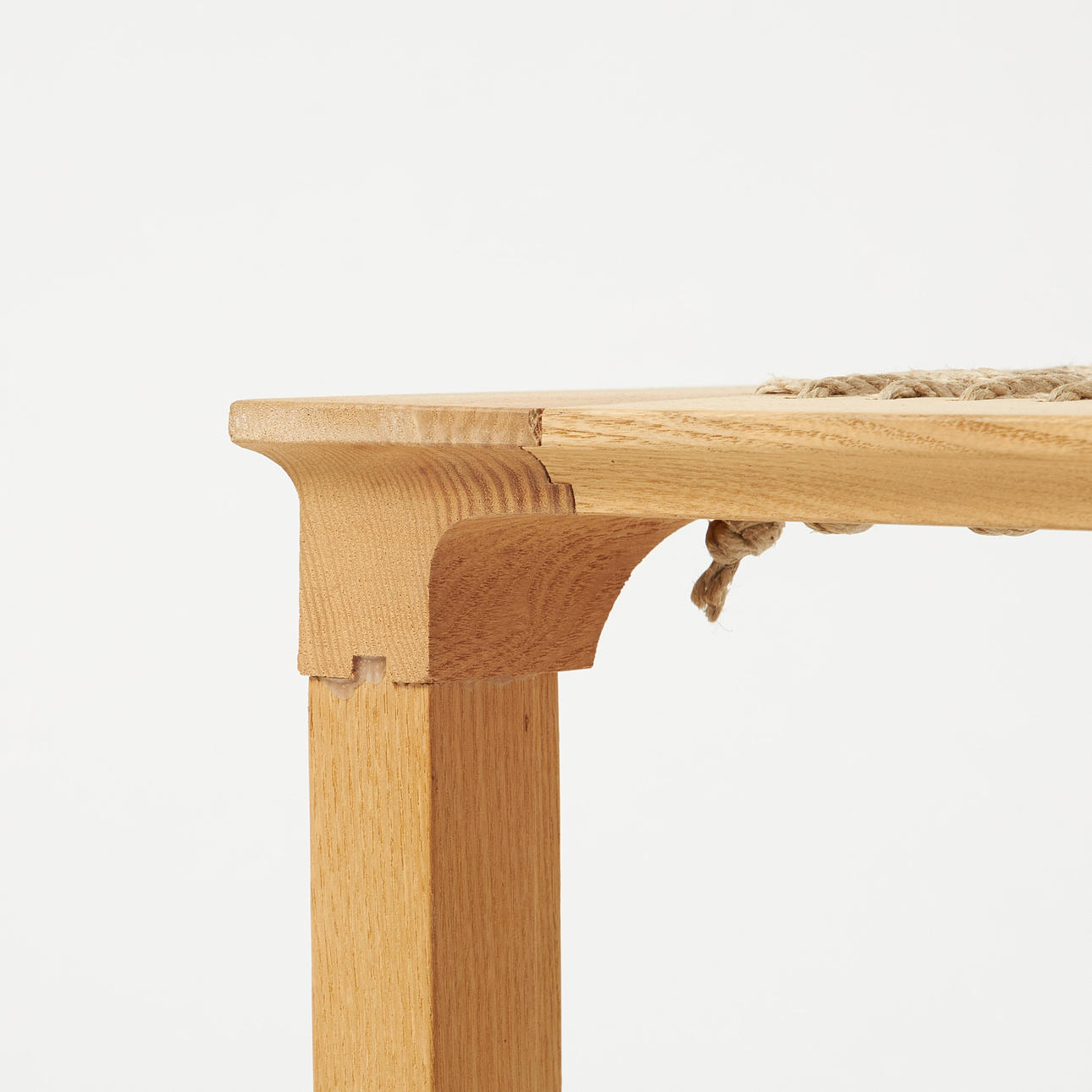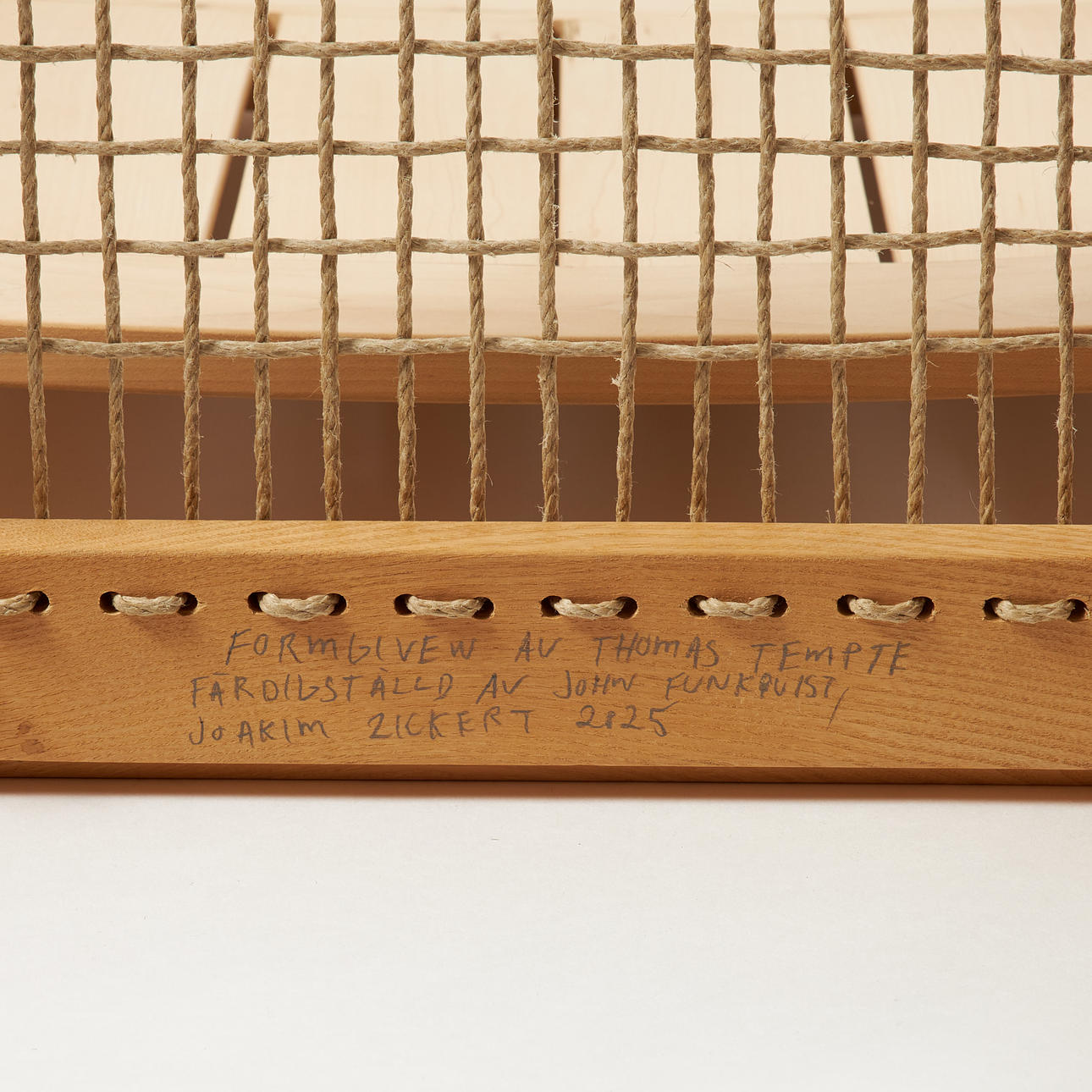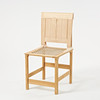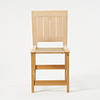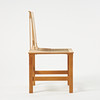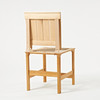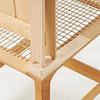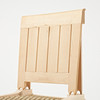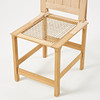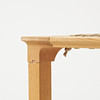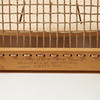THOMAS TEMPTE. Seat, frame in soaped maple, ash and birch, wicker seat, ribbed back.
This auction is closed, but maybe you like the following items?
Description
Seat height 47 cm, back height 94 cm, width 45 cm.
The chair is produced in furniture blanks left by Thomas Tempte. Completed by John Funkquist and Joakim Zickert.
The ancient Egyptian art of furniture is a recurring reference point in Thomas Tempte's designs. In this model, it makes itself felt in the triangular meeting of the back of the chair, where the diagonal of the back tray leans against two vertical supports.
Several elements, especially in the back of the chair, are sculpted by hand and thus it is more difficult to build. The chair is not included in Tempte's furniture catalogue and is probably not intended as a product to the same extent as the other models.
HISTORIAN:
Thomas Tempte, the art carpenter who went his own way. He has earned his place among carpenters in Sweden as a university of its own. As a designer, he has worked in the hidden...
“My workshop produces the furniture and other products that I design and construct myself. I procure sawn timber in my own inspections in the forest, this is sawn on my own as well as storage and drying. In this way I know my material and obtain suitable pieces of wood in each individual part...” excerpt from Thomas Tempte's furniture catalogue
Seatchair
In his furniture catalog, Tempte refers to the chairs as “seat chair”. In building art, the word “chair” describes a stable load-bearing structure, such as a truss. What Tempte refers to with a seating chair is a sturdy construction that carries a seated human being. The seat and back of the chairs are braided, which causes the body weight from the seated person to contract its construction.
Dymlingar
The use of dowels is characteristic of Tempte's carpentry. Dowels are square-shaped plugs that are punched into round holes, locking the construction instead of glue.
Construction
In Thomas Tempte's furniture there are deliberate asymmetries and distortions, presumably to reinforce both form and construction. Such deviations are impossible to convey with a drawing, which he probably did not resort to either. It is a way of working that is highly unconventional in a field that has depended on drawing for at least the last hundred years.
To understand Thomas Tempte's methods, we need to go back to ancient Egypt and his reconstruction of Tutankhamun's throne. The reconstruction with the associated workshop and tools is in the collection of Östergötland County Museum. In his book The Glory of Work, Tempte describes the work on the reconstruction:
“The Egyptian carpenter thought in his constructions in a completely different way from what we do today. He wasn't thinking vertically or horizontally or in 90 and 45 degrees, respectively. The performance world must have been very different. No provisions are perpendicular, no parts are parallel. The legs do not go to the ground vertically, but are like the lion's legs, to move forward and to raise the body up and down. The mowers do not run parallel to the ground or floor, but ease slightly at one end. A German researcher has done a study on how the sign for horizon was written over about two millennia. It's a little crooked.”.
Condition
Compiled from older furniture blanks, recently completed.
Resale right
Theme
Do you have something similar to sell? Get your items valued free of charge!
Description
Seat height 47 cm, back height 94 cm, width 45 cm.
The chair is produced in furniture blanks left by Thomas Tempte. Completed by John Funkquist and Joakim Zickert.
The ancient Egyptian art of furniture is a recurring reference point in Thomas Tempte's designs. In this model, it makes itself felt in the triangular meeting of the back of the chair, where the diagonal of the back tray leans against two vertical supports.
Several elements, especially in the back of the chair, are sculpted by hand and thus it is more difficult to build. The chair is not included in Tempte's furniture catalogue and is probably not intended as a product to the same extent as the other models.
HISTORIAN:
Thomas Tempte, the art carpenter who went his own way. He has earned his place among carpenters in Sweden as a university of its own. As a designer, he has worked in the hidden...
“My workshop produces the furniture and other products that I design and construct myself. I procure sawn timber in my own inspections in the forest, this is sawn on my own as well as storage and drying. In this way I know my material and obtain suitable pieces of wood in each individual part...” excerpt from Thomas Tempte's furniture catalogue
Seatchair
In his furniture catalog, Tempte refers to the chairs as “seat chair”. In building art, the word “chair” describes a stable load-bearing structure, such as a truss. What Tempte refers to with a seating chair is a sturdy construction that carries a seated human being. The seat and back of the chairs are braided, which causes the body weight from the seated person to contract its construction.
Dymlingar
The use of dowels is characteristic of Tempte's carpentry. Dowels are square-shaped plugs that are punched into round holes, locking the construction instead of glue.
Construction
In Thomas Tempte's furniture there are deliberate asymmetries and distortions, presumably to reinforce both form and construction. Such deviations are impossible to convey with a drawing, which he probably did not resort to either. It is a way of working that is highly unconventional in a field that has depended on drawing for at least the last hundred years.
To understand Thomas Tempte's methods, we need to go back to ancient Egypt and his reconstruction of Tutankhamun's throne. The reconstruction with the associated workshop and tools is in the collection of Östergötland County Museum. In his book The Glory of Work, Tempte describes the work on the reconstruction:
“The Egyptian carpenter thought in his constructions in a completely different way from what we do today. He wasn't thinking vertically or horizontally or in 90 and 45 degrees, respectively. The performance world must have been very different. No provisions are perpendicular, no parts are parallel. The legs do not go to the ground vertically, but are like the lion's legs, to move forward and to raise the body up and down. The mowers do not run parallel to the ground or floor, but ease slightly at one end. A German researcher has done a study on how the sign for horizon was written over about two millennia. It's a little crooked.”.
Condition
Compiled from older furniture blanks, recently completed.
Resale right
Theme
Do you have something similar to sell? Get your items valued free of charge!

